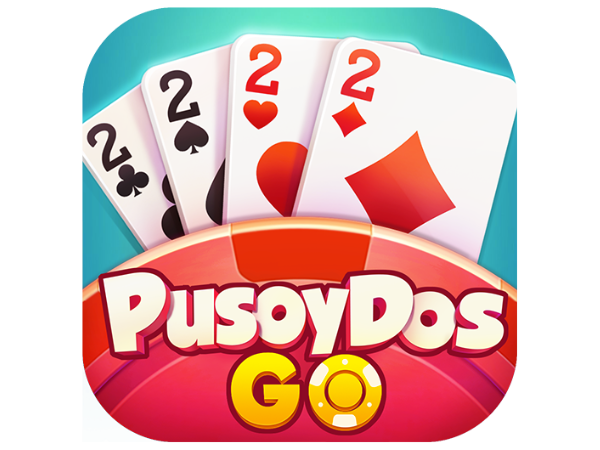Pinoy Games stand as a testament to the enduring traditions that have woven together generations of families. These Pinoy Games, deeply ingrained in the hearts of Filipinos, serve as more than just pastimes; they are the threads that bind families and communities together. In this exploration, we delve into the heartwarming story of how Pinoy Games, in particular, have played a pivotal role in preserving tradition and bringing families closer in the Philippines. Join us at TMT Play 88 on a journey that goes beyond the deck of cards, where laughter, camaraderie, and cherished memories thrive.

First up, we’ve got Pusoy Dos, affectionately known as “Pusoy.” It’s a true Filipino classic that you’ll find in homes all over the country. The beauty of Pusoy Dos lies in its simplicity and the element of strategy it brings to the table. All you need is a standard deck of 52 cards and a group of eager players.
The goal of Pusoy Dos is to be the first one to empty your hand. Sounds simple, right? Well, here’s the twist: you’ve got to play higher-ranking card combinations than your opponents. It can get competitive, fast, and absolutely thrilling. But what sets Pusoy Dos apart is that it’s not just a game; it’s a social experience that brings people closer.
Imagine a lazy Sunday afternoon or a lively fiesta celebration – chances are you’ll spot a group gathered around a table, engaged in an epic Pusoy Dos showdown. Laughter, friendly banter, and high-stakes moments are all part of the package.

If you’re into fast-paced action, Tong-its is your game. Designed for three to six players, this Filipino card game is all about quick thinking and strategic decision-making. Just like Pusoy Dos, you’ll need a standard deck of 52 cards.
In Tong-its, the goal is to create specific card combinations known as “sets” or “hands” to win rounds and rack up points. It’s a race against time and your opponents, and it’s a rush! Tong-its is where skill and luck intertwine, keeping players on the edge of their seats.
Strategy is the name of the game in Tong-its. You’ve got to assess your cards, predict your opponent’s moves, and decide whether to go all out or play it safe. What makes Tong-its even more exciting is that it’s not just about winning; it’s about the sheer thrill of the game.
Just like Pusoy Dos, Tong-its thrives in social settings. Many Filipino households have their own special variations and house rules, making each game unique and memorable.

Now, let’s talk about a hidden gem in the world of Pinoy card games – Lucky 9, also known as “Sipa.” It might not be as well-known as Pusoy Dos or Tong-its, but it’s steadily gaining recognition among enthusiasts.
Lucky 9 uses a Spanish deck cards, harkening back to the Philippines’ colonial history. The deck consists of 40 cards divided into four suits – coins, swords, cups, and clubs. The objective is to create card combinations that add up to nine or multiples of nine. It’s a unique challenge that sets Lucky 9 apart.
Lucky 9 is a blend of Filipino and Spanish heritage, showcasing the country’s rich history through a deck of cards. It offers a different kind of gameplay compared to other Pinoy card games, requiring careful calculation and strategic decision-making.
While it might not be as widespread, Lucky 9 has a dedicated following, and its charm lies in its distinctiveness.
Pinoy card games aren’t just about entertainment in the Philippines – they’re deeply woven into the fabric of Filipino culture. They’re a way for people to connect, celebrate, and strengthen bonds with friends and family.
Picture this: a birthday party, a holiday feast, or a simple weekend get-together. What’s a common sight? A deck of cards on the table. Pinoy Card games provide the perfect opportunity for relatives and friends to come together, share stories, and enjoy each other’s company.
The magic of Pinoy games is the camaraderie they foster. It’s not just about winning or losing; it’s about the laughter that erupts when someone plays a clever move, the friendly competition, and the memories created during those long nights of gameplay.
And it doesn’t stop there. Across the Philippines, you’ll discover regional and local variations of card games. Each community adds its unique touch, reflecting the nation’s cultural diversity.
Like any cherished tradition, it’s vital to preserve and promote the heritage of card games. Thankfully, there are initiatives aimed at keeping these Pinoy games alive and thriving.
Various organizations and clubs are dedicated to the promotion of traditional Pinoy Games. They organize tournaments, events, and workshops to educate both the young and old about the beauty of these games. These gatherings are more than just competitions; they’re opportunities to pass down knowledge and skills, ensuring that these games continue to be a part of Filipino culture.
For those eager to learn and play Pinoy games specially card games, there are plenty of resources available. Books, online tutorials, and mobile apps offer valuable information and practice opportunities. Whether you’re a novice looking to grasp the basics or a seasoned player seeking to refine your skills, there’s something for everyone.
In wrapping up our exploration of Pinoy card games, we celebrate the rich tradition they represent. Pusoy Dos, Tong-its, Lucky 9, and countless other Pinoy games are more than just pastimes – they’re a reflection of Filipino culture, history, and the spirit of togetherness.
So, the next time you find yourself with a deck of cards and a group of friends or family, remember that you’re not just playing a game. You’re participating in a cherished Filipino tradition that spans generations. May the cards fall in your favor, and may the laughter and camaraderie continue to fill your gatherings.
The most popular Pinoy card games include Pusoy Dos, Tong-its, and Lucky 9. These Pinoy games are widely played and enjoyed across the Philippines.
Pusoy Dos is played with a standard deck of 52 cards. The objective is to be the first to empty your hand by playing higher-ranking card combinations than your opponents. Players take turns, and the game continues until one player wins by emptying their hand.
Pinoy card games are known for their ability to bring families closer. They provide an opportunity for relatives to gather, share stories, and enjoy each other’s company in a fun and competitive environment. The social aspect of these Pinoy games is a significant part of their appeal.
Yes, there are often regional or local variations of Pinoy card games. Different areas of the Philippines may have their own rules, customs, and traditions associated with card gaming. These variations add to the diversity of card game experiences across the country.
You can learn how to play Pinoy card games through various resources. Books, online tutorials, and mobile apps provide valuable information and practice opportunities. Additionally, you can join local clubs or attend events dedicated to these Pinoy games to learn from experienced players.